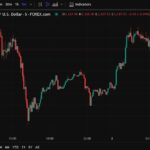Analyzing Trump’s Tariff Policies: Economic Impact and Market Trends
Tháng 4 2, 2025
Unpacking Trump’s Upcoming Announcement on Reciprocal Tariffs: Impact on Trade and Economy
Tháng 4 2, 2025Recent Developments in Trump’s Reciprocal Tariff Announcement
In a significant move that points to ongoing shifts in U.S. trade policy, President Donald Trump announced the impending introduction of reciprocal tariffs, slated for April 2. This bold initiative is part of a broader objective to recalibrate the United States’ economic relationships with trading partners, especially those with notable trade surpluses against the U.S. economy.
Understanding Reciprocal Tariffs
Reciprocal tariffs are defined by their straightforward premise: they involve imposing an equivalent tax rate on imports from other nations that mirrors the tariffs those countries place on U.S. goods. Ideally, true reciprocal tariffs would match tax rates on a product-by-product basis. However, this method presents substantial administrative complexities, making perfect implementation a challenge.
The rationale behind this approach is simple yet impactful: by levying the same import taxes on foreign goods that those nations impose on U.S. exports, the U.S. aims to level the playing field for American businesses. This goal resonates strongly in sectors where U.S. products face higher tariffs abroad, thereby hindering competitiveness.
Implications of the Announcement
The potential implications of Trump’s reciprocal tariffs have drawn mixed reactions. Economists have raised concerns regarding the broader consequences these tariffs could have on global trade dynamics. Specifically, they caution that reciprocal tariffs could hinder trade flows, lead to increased costs for U.S. businesses and consumers, and spur retaliatory tariffs from affected nations. The interconnected nature of the global economy means that unilateral actions can often lead to tit-for-tat responses, escalating what could become a trade war.
Moreover, while the initiative has yet to specify targeted countries, discussions around collective “Dirty 15” nations indicate that the focus will be on countries that are major trade partners with hefty surpluses, causing friction in trade relations. The lack of specificity raises questions about which nations could be impacted, heightening uncertainty among international business communities. For further insight into China’s approach to trade and its strategic moves in this context, this article provides valuable information.
Consumer Impact and Future Considerations
One major concern regarding the anticipated tariff announcement is the potential rise in consumer prices. As companies face increased import costs, these expenses are likely to be transferred to consumers, particularly impacting those goods that lack viable substitutes. In markets where supply is constrained, such as electronics or machinery, consumers may find themselves paying significantly more.
Conversely, should negotiations yield positive outcomes resulting in reduced tariffs, there is a possibility that consumer prices could stabilize or even decrease over time. This scenario hinges on the outcome of ongoing discussions between the United States and its trading partners, where dialogue could prove critical in averting unnecessary economic strain.
In conclusion, President Trump’s announcement regarding reciprocal tariffs signals a pivotal moment in U.S. trade policy. As industries and consumers brace for potential changes, the emphasis on open negotiations will likely play a crucial role in shaping the future landscape of international trade relationships. The ongoing developments surrounding these tariffs warrant close monitoring as the implications unfold across various sectors of the economy.
